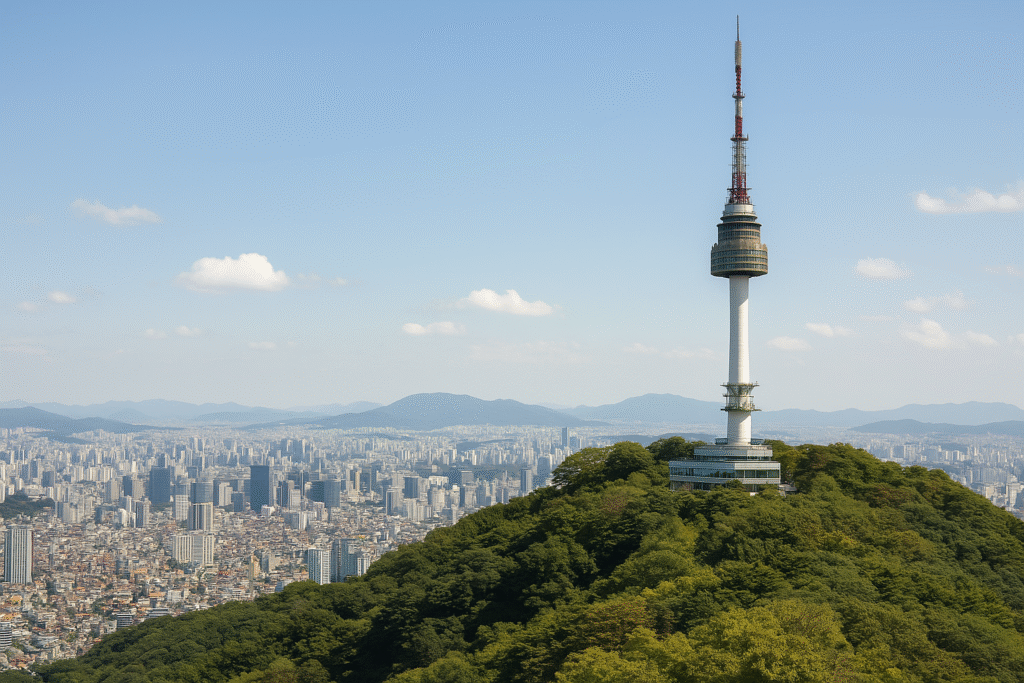Seoul Becomes a Global Stage Through Animation
When Netflix released K-POP Demon Hunters, it wasn’t just another animated action series — it was a cultural event that reframed how the world sees Seoul. The anime follows a fictional K-pop girl group battling supernatural forces, but the real star is the city itself. Seoul is not treated as a backdrop in this story; it is depicted as a living character with moods, contradictions, and mysteries. By placing battles, quiet moments, and emotional climaxes in real neighborhoods, the show magnified details that many locals take for granted, while turning them into cinematic icons for a global audience.
What makes this fascinating is how the anime avoids presenting Seoul as a polished postcard. Instead, it reveals the city’s raw textures: alleys where tradition and modernity collide, districts where neon lights coexist with old stones, and landmarks layered with stories beyond tourism. To understand the show’s cultural impact, let’s explore the actual places featured in K-POP Demon Hunters — not through tourist clichés, but through the unusual, often overlooked qualities that make them truly memorable.
The Landmarks in K-POP Demon Hunters and Their Untold Sides
Bukchon Hanok Village – A Living Time Capsule
At first glance, Bukchon Hanok Village seems like a preserved set of traditional Korean houses with curved tiled roofs and winding alleys. But the defining feature of Bukchon is that people still live inside these centuries-old homes. Laundry flutters from wooden balconies, children play in courtyards, and cars squeeze through narrow lanes. It is not a staged heritage site but a neighborhood in motion. This coexistence between daily life and heritage tourism creates an uncanny atmosphere: you are not walking through ruins, you are intruding into someone’s lived history. K-POP Demon Hunters subtly captures this duality, showing Bukchon as more than a cultural museum — it is a space where tradition continues to breathe against the pressures of modern Seoul.
Naksan Park – Seoul’s Canvas of Graffiti and City Walls
Naksan Park is often praised for its fortress walls and panoramic views of the city skyline. Yet its most unique charm lies in the graffiti villages that sprawl down the slopes beneath the park. Here, murals of animals, abstract shapes, and political messages cover walls that stand side by side with stone relics from centuries past. The result is a striking visual clash: history literally colliding with subculture. The anime places action sequences on this hill, and the setting makes sense — Naksan is not just a scenic overlook but an open-air gallery of rebellion and creativity. It reflects Seoul’s restless spirit, where art is not confined to galleries but spills out into alleys, transforming ordinary walls into living canvases.

Myeongdong – Where Faith Meets Fashion
Myeongdong is marketed worldwide as the ultimate K-beauty and fashion shopping district. But its most unusual feature is what towers quietly above the storefronts: Myeongdong Cathedral, a Gothic-style church that has stood since 1898. While neon lights advertise skincare products and fast fashion below, the cathedral symbolizes Korea’s pro-democracy movement of the 1980s, when activists gathered in its courtyards. This paradox — consumer frenzy next to a symbol of resistance and spirituality — makes Myeongdong more than a shopping street. In K-POP Demon Hunters, its chaotic energy fits perfectly, reflecting Seoul’s ability to wear multiple faces at once: commercial, sacred, and political.
N Seoul Tower – The Locks That Outlive Love
N Seoul Tower, perched on Namsan Mountain, is one of the most photographed landmarks in Korea. Tourists flock here for city views, but what lingers in memory are the thousands of “love locks” attached to the fences and railings. Couples inscribe their initials, hoping their bond will last as long as the lock. The irony is striking: relationships often fade, but the rusting locks remain, layered one over another, forming accidental sculptures of memory and impermanence. The anime uses the tower as a beacon of light, visible from across the city, but in reality, the tower whispers collective stories about fleeting love, permanence in decay, and the way public rituals shape urban identity.
Jamsil – The River That Divides and Unites
Jamsil, home to the towering Lotte World Tower, represents Seoul’s most futuristic face. Yet its uniqueness comes not from glass and steel but from the Han River that flows through it. The river is more than scenery; it embodies Seoul’s dual heartbeat. On one side, luxury malls and skyscrapers symbolize ambition and global aspiration. On the other, residential complexes house ordinary families leading modest daily lives. By staging sequences in Jamsil, K-POP Demon Hunters highlights this tension — the coexistence of grandeur and ordinariness, dreams and routines. It is here, by the water, that Seoul’s contrasts become most visible.
Why These Details Matter
By drawing attention to overlooked quirks — residents still living in Bukchon’s hanoks, graffiti murals in Naksan, Gothic spires in Myeongdong, rusting love locks on N Tower, and the double life of Jamsil’s riverbanks — K-POP Demon Hunters does more than showcase pretty backgrounds. It reframes Seoul as a city of contradictions that demand exploration. These details remind viewers that Seoul is not static; it is layered, evolving, and alive with tension.
Conclusion – Seoul as a Story, Not Just a Destination
Demon Hunters demonstrates how media can transform the way a city is seen. Seoul emerges not as a polished tourist brand but as a dynamic story — one where history and modernity clash, where commerce and spirituality coexist, and where permanence and impermanence leave their traces in unexpected ways. For international audiences, this anime is an invitation: don’t just visit Seoul to see landmarks, come to feel the contradictions that make it cinematic.





